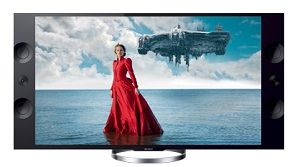Linear TV Viewing Still Matters As Cord-Cutting Trend Expands: Study

Although cord-cutting is on the rise, the amount of viewing of regularly scheduled broadcast TV has remained fairly stable, Ericsson found in its fourth-annual ConsumerLab survey, which tabulated results from a mix of online and in-home interviews conducted in more than a dozen countries.
According to the study (PDF), 83% said they watch scheduled broadcast TV on a more than a weekly basis, up from 79% in 2012, and the same percentage in 2011.
"Linear TV still has an important role for consumers, and we don't see any decline in frequency of usage. For example, as many as 36% of respondents feel that watching live sports is a very important part of their TV habits," Anders Erlandsson, senior researcher at Ericsson ConsumerLab, said in a statement.
Pay-per-view usage was also stable, with 15% using it at least once a week, versus 17% in last year, and 15% in 2011.
Ericsson’s study also amplified recent findings that cord-cutting and cord-shaving represent a growing trend. A portion of the survey that limited to results from nine countries found that 11% had completely eliminated a managed TV package, compared to 7% in 2012. About 23% reported eliminating or reducing their subscription TV packages, versus 14% in the year earlier.
And streaming continues to go more mainstream as “late adopters” catch on. Forty-one percent of those surveyed aged 65 to 69 said they streamed on-demand or viewed time-shifted video more than once a week, while 40% in the 60-64 age group said the same.
Among other big takeaways, the study found that 72% of respondents use mobile devices to watch video at least weekly, with 42% of that group doing so outside the home.
Multichannel Newsletter
The smarter way to stay on top of the multichannel video marketplace. Sign up below.
And viewer attention is becoming increasingly fragmented, as 75% of those surveyed said they use mobile devices while watching TV.
Ericsson’s study also pinpointed which services and features consumers consider worth paying for. “Excellent” HD quality topped the list (35%), followed by ad-free video (30%),
Time-sifted/VOD content (27%), “extreme” video quality/4K (25%), and a la carte options (22%). The feature consumers were least willing to pay for was the ability to access and watch different camera angles (4%).
Ericsson conducted the research in Brazil, Canada, Chile, China, France, Germany, Italy, Mexico, Russia, South Korea, Spain, Sweden, Taiwan, UK and the US. Its results were based on 15,000 online interviews and 30 in-home interviews conducted in Sao Paolo, Seoul, Stockholm and New York.
